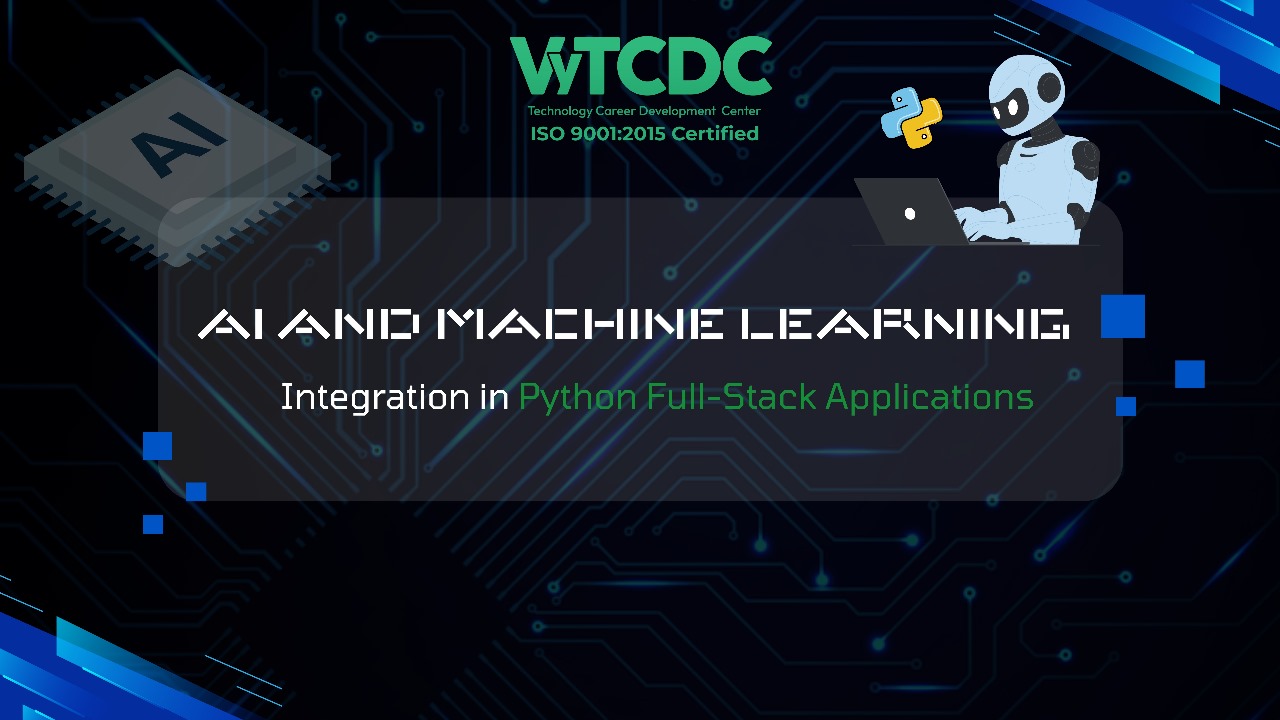In today’s fast-evolving digital world, Artificial Intelligence (AI) and Machine Learning (ML) are revolutionizing full-stack development. With Python emerging as a leading language for AI, it naturally extends into full-stack development, making Python-based full-stack applications more innovative and more efficient. Whether you’re exploring a Python Full Stack development course or venturing into integrating AI into your projects, understanding this synergy is crucial.
Why Choose Python for AI-Integrated Full-Stack Development?
Python is widely celebrated for its simplicity, versatility, and extensive libraries that support AI and machine learning. It provides a robust foundation for both backend and frontend tasks, making it an excellent choice for FSD Python course enthusiasts and developers alike.
The integration of AI with full-stack development allows developers to create applications that can:
- Personalize user experiences using recommendation systems.
- Automate repetitive tasks, such as data entry or customer support.
- Analyze data in real time for business insights.
Key Components of Python FSD with AI Integration
Backend (Server-Side) Intelligence
AI and ML models often reside in the backend, where they process data and return actionable insights to the front end. Python frameworks like Django and Flask are pivotal in deploying these models.
For example:
- Flask can serve ML models as RESTful APIs.
- Django simplifies handling complex data-driven applications by integrating seamlessly with databases.
Frontend (Client-Side) Intelligence
While backend AI handles complex computations, some lightweight AI tasks, like predictive text and intelligent suggestions, can operate on the front end. Frameworks like React.js and Vue.js are commonly paired with Python for enhanced user interactivity.
Expanded Benefits of AI in Python Full-Stack Development
Real-Time Applications
AI integration enables the creation of applications that function in real-time, such as chatbots, fraud detection systems, and live recommendation engines. For instance, combining Python with tools like TensorFlow.js enables intelligent features to be directly integrated into web browsers.
Cloud Integration
Cloud platforms like AWS, Azure, and Google Cloud simplify deploying Python-based AI models at scale. With serverless architectures, developers can focus on code rather than infrastructure.
Seamless Automation
AI introduces automation into the development lifecycle itself. From automated testing using AI-driven frameworks to Continuous Integration and Continuous Deployment (CI/CD) pipelines, Python helps optimize the development workflow.
Natural Language Processing (NLP) Applications
Python’s libraries, such as spaCy and NLTK, empower developers to build NLP features such as sentiment analysis, text summarization, and voice-based user interfaces.
Top Python Libraries for AI Integration in Full-Stack Development
- TensorFlow and PyTorch: For building and deploying deep learning models.
- Scikit-learn: Ideal for traditional machine learning tasks such as classification and regression.
- Flask/Django REST Framework: This is used to create APIs that communicate with AI models.
- Pandas and NumPy: For managing and preprocessing large datasets effectively.
- Keras: A high-level library that simplifies neural network creation.
- OpenCV: For image and video processing tasks, commonly integrated into applications needing computer vision.
By combining these libraries, full-stack developers can create applications capable of real-time analysis, data visualization, and more.
Getting Started
Embarking on this journey often begins with enrolling in a Python Full Stack Development course tailored to AI integration. Such courses focus on blending traditional web development with modern AI frameworks, equipping you with the skills needed to build intelligent applications from scratch.
Established in 2002, VyTCDC has been vy ventures’ premier technology incubator since 2002. It offers transformative technical training and internships across its specialized entities.
Conclusion
The fusion of AI and full-stack development in Python offers unparalleled possibilities. Whether you’re a beginner learning through a Python FSD course or an experienced developer, mastering this integration can significantly enhance your ability to create innovative and impactful applications.
From real-time applications to cloud integration and beyond, the synergy of Python, AI, and full-stack development is shaping the future of software development. Now is the perfect time to embrace this powerful combination to stay ahead in the ever-evolving tech landscape.






